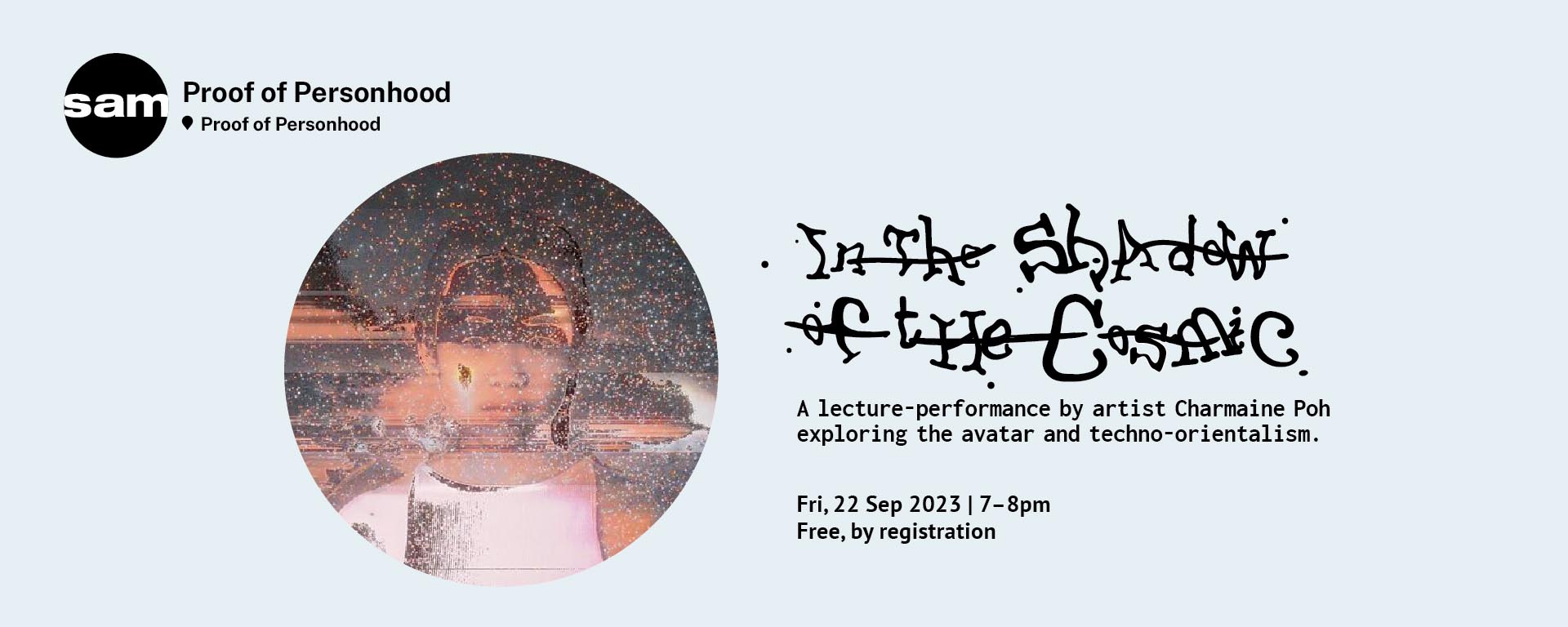in the shadow of the cosmic
in the shadow of the cosmic is a performance-lecture exploring the multiplicity of the avatar. Expanding Poh's YOUNG BODY series, the character E-Ching is placed in conversation with vocal clones, anime characters, 3D influencers, and other entities in a vast digital constellation. The performance-lecture traces a technological lineage from the East Asian economic miracle of the 1980s and '90s and the emergence of techno-orientalism, positing that the digital image of the East Asian femme body was borne at a confluence of these historical flows. Pertinent to the work is the recursive logic of Daoism, in which image, self and cosmology reverberate in endless loops. Combining video, live performance and sound, in the shadow of the cosmic is a call to re-open questions of being and becoming.
in the shadow of the cosmic is presented in conjunction with the exhibition Proof of Personhood: Identity & Authenticity in the Face of AI at Singapore Art Museum.
Motion graphics: Jawn Chan
Audio generation: Jawn Chan, Ashley Hi
Chatbot customization: Ashley Hi
3D animation: Brandon Tay
Movement artists: Sonia Kwek and Chloe Chotrani
Music (the track, Mutualism): Anise
----------
Image courtesy of the artist.
Charmaine Poh (b. 1990, Singapore; lives/works in Berlin) is an artist working between image-making and performance to peel apart, interrogate, and hold ideas of agency, repair, and the body across worlds. Her image-making practice employs ethnographic methods, focusing on issues of memory, gender, youth, and solitude in the Asian context. Often working with portraiture, she considers the performance of self and the layers of identity we build.
Poh graduated from Tufts University with an B.A. in International Relations, and the Freie Universität Berlin with an M.A. in Visual and Media Anthropology. She is currently pursuing a PhD at Feie Universität Berlin.
Proof of Personhood: Identity & Authenticity in the Face of Artificial Intelligence explores the unstable relationship between identity, agency and authenticity in popular culture and emerging technology.
Art is assumed to be a fundamentally human undertaking but with the introduction of generative “artificial intelligence” tools, this assumption is being questioned. As humans, we have a tendency to project our own images, physiology and psychology onto technological systems in an attempt to better understand them, a process which often reproduces societal biases. The featured artworks update the genre of portraiture, depicting human and non-human subjects to investigate the nature of personhood in the 21st century and, in the process, highlight the shifting conception of who—or what—is considered human. As the same techniques for performing an authentic personality are employed by celebrities, everyday social media users and bots, Proof of Personhood asks: What does it mean to be “real”?


